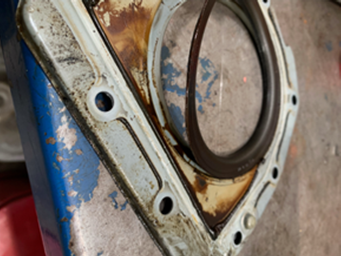Why you should pay attention to “check engine light” warnings
By Brian England
When a VW came in running badly with the “check engine light” on we started the diagnostics by scanning the computer for data. To our surprise, we discovered a long shopping list of codes. Since this was the car’s first visit to the shop, we performed a baseline check of the entire car. There were a few other issues not indicated by the initial scan, including a large oil leak.
Since there were so many codes, we decided to clear the codes to see what codes came back during the second scan. It turned out the engine crank case breathing system was blocked and required the cleaning and resealing of the camshaft cover and related parts. After we corrected this, most of the codes did not come back on, except for a code that related to the engine breathing system.
We double checked everything to see if everything still looked good. Since we still had not found the oil leak issue, we searched the vehicle database for any pattern failures related to this issue and found one talked about the rear main oil seal failing. Could this be the culprit?
After getting permission to remove the transmission to inspect the rear main seal, we found the issue (see photo above). The seal had come apart. The rear main seal on most cars is a complex thick rubber seal with a spring that keeps pressure on the crankshaft, leaving nothing to chance but this was a flimsy little seal that just fell apart. We installed the new seal, reinstalled the transmission, reran the diagnostics and the “check engine light” codes related to the engine breathing system stayed off.
“Check Engine Light” repairs normally relate to electronic sensors failing. In this case, however, the issue was a failed crankcase seal.
The post Why you should pay attention to “check engine light” warnings appeared first on BA Auto Care.
